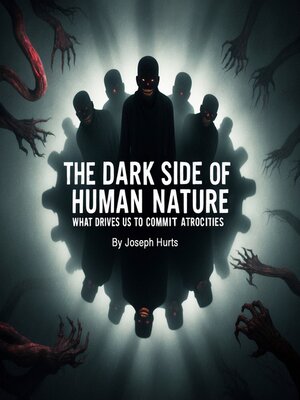The Dark Side of Human Nature
audiobook (Unabridged) ∣ What Drives Us to Commit Atrocities
By Joseph Hurts

Sign up to save your library
With an OverDrive account, you can save your favorite libraries for at-a-glance information about availability. Find out more about OverDrive accounts.
Find this title in Libby, the library reading app by OverDrive.



Search for a digital library with this title
Title found at these libraries:
| Library Name | Distance |
|---|---|
| Loading... |
This audiobook is narrated by a digital voice.
The capacity for evil exists not as an aberration in human nature, but as a fundamental component of our psychological architecture. This unsettling reality challenges our comfortable assumptions about morality and forces us to confront the uncomfortable truth that the potential for committing atrocities lies dormant within ordinary people living ordinary lives. The most devastating acts of cruelty throughout history have not been perpetrated by psychopaths or monsters, but by individuals who, in most circumstances, would be considered normal, decent members of society.
The Stanford Prison Experiment conducted by Philip Zimbardo in 1971 revealed how quickly ordinary college students could transform into cruel oppressors when placed in positions of authority over their peers. Within days, the student guards were engaging in psychological torture and dehumanizing treatment of the student prisoners, demonstrating that the line between good and evil is far thinner than most people realize. The experiment had to be terminated early because the mock guards' behavior became so abusive that it posed genuine risks to the psychological well-being of the mock prisoners.
Stanley Milgram's obedience experiments further illustrated the disturbing ease with which ordinary people can be induced to inflict harm on others when directed by authority figures. In these studies, participants were instructed to deliver what they believed were increasingly painful electric shocks to other people as part of a supposed learning experiment. Despite the apparent distress of the victims, the majority of participants continued to administer shocks up to dangerous levels when encouraged by the experimenter, revealing how readily people will abandon their moral principles when instructed to do so by perceived authorities.







